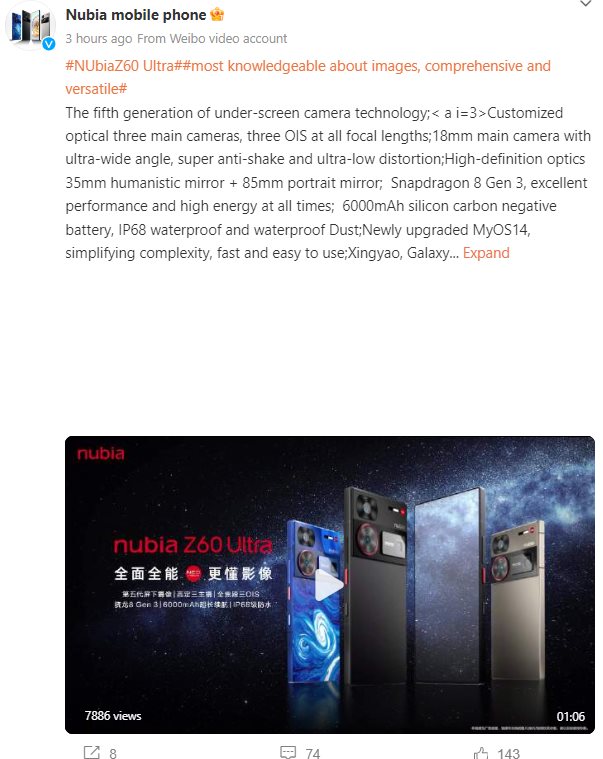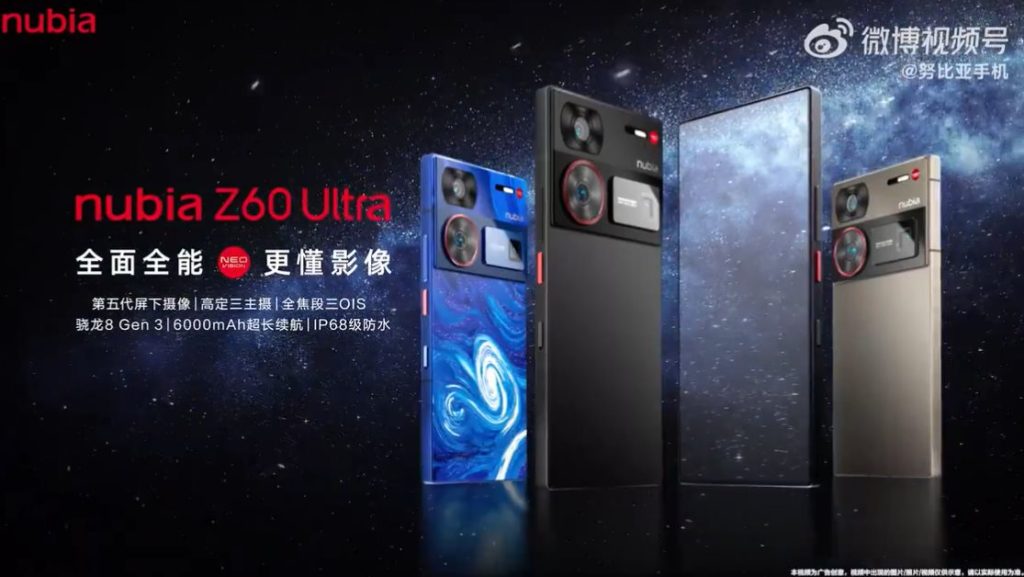Nubia Z60 Ultra is slated to launch on December 17 in China. Ahead of launch, most of the specifications and design details are already live for the device. However, the pricing and availability details are yet to become official. In a new teaser, the company officially unveiled some additional details about the smartphone, like the presence of a 6000 mAh graphite anode battery and IP68 waterproof and dustproof certification.

The teaser also flaunts the presence of Snapdragon 8 Gen 3 SoC along with the 5th gen under-display front camera technology. It features a triple-camera module optimized with OIS. The smartphone houses an 18mm 50MP ultra-wide-angle lens, a 35mm 50MP primary sensor, and an 85mm 64MP telephoto camera. Nubia Z60’s exterior design looks more captivating with three color options: Starry Sky Collector’s Edition, Galaxy, and Shine.
The exciting Starry Sky Collector Edition boasts exclusive glasses-free 3D star diamond technology on the rear. The starry sky 3D design is easily visible without any 3D glasses. The smartphone even ships with an external case and a charging adapter consisting of 3 different ports: USB-C 1, USB-C 2, and USB-Type-A. A couple of USB C Type 1 and Type 2 cables are also part of the box.

Nubia Z60 Ultra will further feature a 6000mAh battery with 80W wired fast charging technology. It could come with a 6.82-inch 1.5K BOE LTPO display with a 120 Hz refresh rate. The display offers 1400 PWM dimming and 1500 nits of maximum brightness. Further, it could come with up to 16 GB of LPDDR5x RAM and 1 TB of UFS 4.0 storage.
The graphite anode battery increases energy density, which enables it to hold more charge while weighing the same. However, Nubia employs a mix of silicon and graphite materials for the anode to make it hold more charge without any major expansion-related issues.
Talking about the design, the smartphone offers a raw look with a unique rear design that features a couple of camera modules and a long LED flash. The smartphone also adds an alert-slider-like switch, which could help users customize camera functionality.
Related:
- Xiaomi Smart Band 8 Pro Genshin Impact Special Edition up for sale
- Xiaomi 13 Ultra Premium Camera Phone is now only $799
- Giztop’s Christmas Holiday Savings: Unwrap Joy with Exclusive Discount
- Xiaomi 13 Ultra Premium Camera Phone is now only $799
- Download the best GCam APK for Samsung Galaxy S23 Ultra
- Best Feature Phones with UPI support 2023: Nokia Dominates







